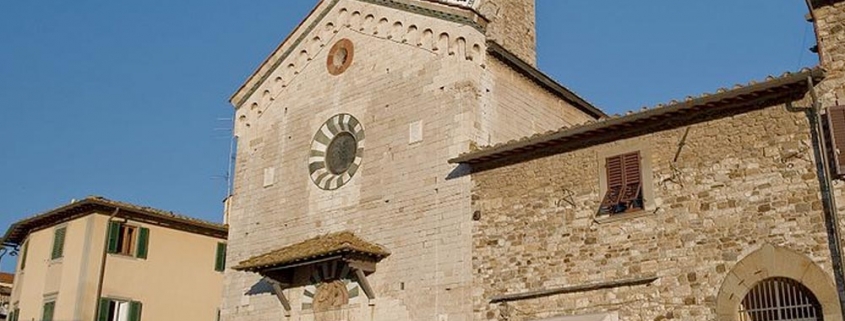Pieve di Santa Maria dell’Antella
The earliest records of this Church date back to a document from November 4, 1040. While typically Romanesque externally, numerous modifications can be seen within, thanks to works carried out between the 16th and 17th centuries in particular.
A single nave defines the Church; the nave once ended with a semi-circular apse but is now headed by another Romanesque, originally separate, structure that serves as the sacristy. The 17th century pietra serena altars have been preserved and placed along the walls of the nave, along with the marble baptismal font, also from the same period. The five-sided stone pulpit can be dated to an earlier time, however, as Bishop Alessandrini commissioned it in 1580.
Significant pieces of artwork are displayed within the four lateral altars. The Crucifixion by Simone Pignoni and a shrine frescoed by Paolo Schiavo in the 15th century, with the Madonna and Child with St. Francis and St. John the Evangelist, can be found on the right-hand altar. Both are excellent examples of the narrative simplicity that characterized 17th century Florentine painting.
On the right hand altar, Lorenzo Lippi‘s portrayal of the Madonna who bestows the habit to the founding saints of the Servite Order, dated to 1660, particularly stands out for its quality. This painting is also of special local interest in that the church, rectory and tabernacle are depicted within, giving the viewer an idea of how they would have appeared at the time of their painting.
Domenico Passignano‘s Assumption of the Virgin found in the apse is also a notable piece, in addition to a partially glazed 16th century polychrome terracotta Madonna Enthroned attributed to Benedetto Buglioni, which is housed in one of the niches.
This post is also available in: Italian



